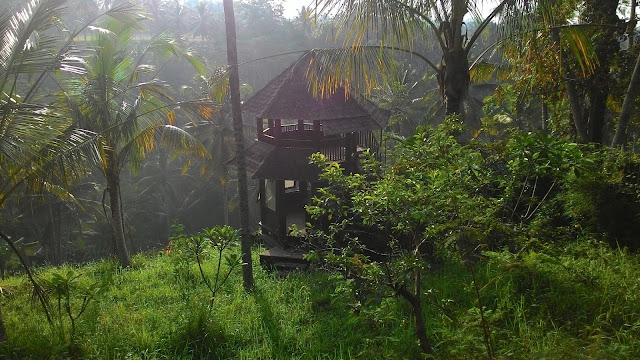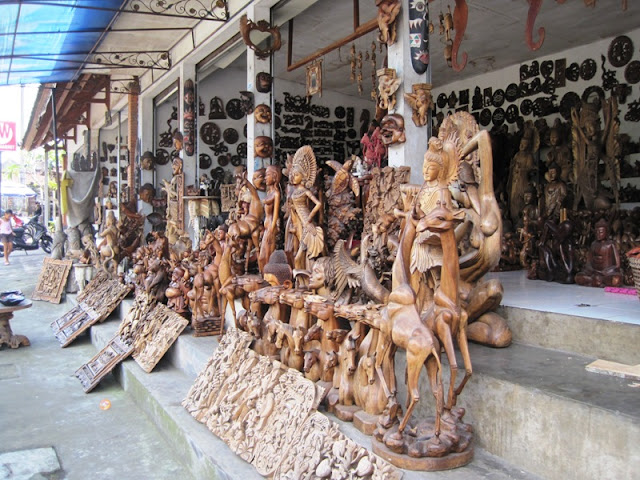The number of things to do in Bali will amaze new visitors and keep long-time travelers coming back for more. Bali is the rare place that is both deeply spiritual and totally fun. Whatever your age or interest, whether you are travelling with your loved ones or alone, you are certain to find mental and physical satisfaction. Even during a short visit, you can let loose, stay fit, and explore the cultural and traditional roots of the island. In fact, with so many affordable options on offer, the only hard work in Bali is deciding what to do next.
Bali’s natural attractions include miles of sandy beaches (many are well-known amongst surfers), picturesque rice terraces, towering active volcanoes over 3,000 meters (10,000 ft.) high, fast flowing rivers, deep ravines, pristine crater lakes, sacred caves, and lush tropical forests full of exotic wildlife.
The island’s rich cultural heritage is visible everywhere – in over 20,000 temples and palaces, in many colorful festivals and ceremonies (including tooth filings and cremations), in drama, music, and dance.
You can experience Bali on many different excursions and guided tours by coach, private car or “Big Bike”, by boat or even by chartered plane and helicopter: seeing Bali’s beaches and rice terraces, the famous Besakih Temple on the slopes of holy Mount Agung, Lake Batur and it’s active volcano, Ubud, Legian, Kuta, Nusa Dua, and the temples of Tanah Lot and Ulu Watu.
Most ORGANIZED full day tours by car (about 8 to 10 hours, min 2 persons) cost about US$50 to US$70 per person, half day tours US$35 to US$40. These prices include a guide and transport in an air-conditioned private car, all entrance fees, but no meals.
You can hire a car with a driver yourself and explore the island on your own. The driver will like a guide. Likethis you can explore the places you want, stop where you want and decide what interests you.
Most Popular Bali Tours / Day Trips
Kintamani Volcano Tour: The first stop is often in the village of Batubulan to watch a performance of the Barong and Kris Dance. Afterwards you visit the villages of Celuk (silver jewelry) and Mas (wood carving) to see Balinese artisans at work. Ubud, Bali’s cultural center, has grown to a busy town with numerous Balinese art galleries and shops. A scenic drive over small roads overlooking beautiful rice terraces brings you to the mountain village of Kintamani (about 5,000 feet above the sea) which offers spectacular views of Lake Batur and the volcano. You can cross the crater lake below the still active Mount Batur and visit the “Bali Aga” village of Trunyan. Return through traditional villages with stops in Tampaksiring to visit the temple of Tirta Empul, and to visit the Elephant Cave “Goa Gajah”, a hermitage from the 11th. century used by both Buddhists and Hindus.
The “Mother Temple” and East Bali Tour: Drive to Besakih through various villages visiting on the way a weaving factory, see the famous painted ceiling at the old “Palace of Justice” in Klungkung, and visit the school of painting in Kamasan. The “Mother Temple” in Besakih is Bali’s most holy and Indonesia’s biggest Hindu temple. It was build in the 11th. Century in an altitude of 1,000 meters (3,000 feet) on the slopes of Mount Agung. You pass picturesque rice terraces on the way to the walled “Bali Aga” village of Tenganan, and continue to Candi Dasa on the East coast. On the way back it’s recommended to stop at the famous Bat Cave “Goa Lawah” with thousands of bats hanging from the walls.
Bedugul Tour: After a stop in Sangeh to visit its holy forest inhabited by wild monkeys, drive up into the mountains to Lake Bratan (1,200 meters above sea level) and the picturesque water temple Ulun Danu. Visit the busy flower, fruit and spice market in Candikuning where most of Bali’s vegetables come from. Drive back through small country roads, villages and rice fields, with a stop in an artisan village specializing in gold threaded textiles (Ikat) worn during important ceremonies.
North Bali Tour: Drive the scenic road via Pupuan through the mountains to Bali’s North coast. You’ll enjoy beautiful views of picturesque rice terraces, and large plantations growing vanilla, chocolate, coffee, cloves, and even wine grapes. Near the village of Banjar is a popular hot spring where you can take a bath in the natural pond. After a lunch on the black beach in Lovina you pass the old capital of Singaraja on the way to Git Git, famous for its multi-tier water fall. Return over back roads to see the unspoiled Bali. (This tour can be combined with the visit to Bedugul.)
Monkey Forest & Tanah Lot Tour: Visit the royal Taman Ayun temple in Mengwi (built in 1624), the holy monkey forest near Sangeh, and famous Tanah Lot. This picturesque Balinese temple was built in the 16th. Century on a huge rock 100 yards off Bali’s West coast and is surrounded by the sea during high tides. Spectacular sight, however, spoiled by thousands of tourists visiting every day during sunset. To avoid these, enjoy the view from the lobby of the nearby Le Meridien Nirvana Resort.
Handicraft Villages & Ubud Tour: Visit the artisan villages of Batubulan (stone carving), Celuk (silver & gold jewelry), Mas (wood carving), and Pengosekan (painting). Stop at the “Bali Art Market” in Sukawati to bargain for all kinds of handicrafts and textiles.
Already in the 1930s Ubud had been made famous around the world as Bali’s cultural center by the German intellectual Walter Spies, the Dutch painter Rudolf Bonnet and other foreign artists who’d made it their home.
Today Ubud is a fast growing town with numerous art galleries and shops offering paintings, wood carvings, textiles, and all kinds of souvenirs. Don’t miss the MUSEUM PURI LUKISAN in the center of Ubud, the NEKA MUSEUM in Campuhan, the NEKA GALLERY in Ubud, the AGUNG RAI GALLERY in Peliatan, and the AGUNG RAI MUSEUM in Pengosekan to see the difference between creative art and more commercial products. Problem is that when you see their “Permanent Collections” at many “Galleries” you’ve seen real art, and when you return to their show rooms you don’t like any of the very commercial products any more.
The SENIWATI GALLERY – ART BY WOMEN, founded in 1991 by Mary Northmore (the very personable wife of famous painter Abdul Azis) to help Balinese women to be accepted as artists, is a place you should not miss whatever you do. The main purpose of this Bali art gallery is to expose the long understated brilliance of independent women artists resident in Bali, and to motivate, train, and encourage young Balinese girls with obvious creative gifts. Visit also the BLUE MOON STUDIO and GALLERY, founded in 1994 with an emphasis on exhibiting contemporary artists.
The LOTUS CAFE is perhaps the most popular meeting point in town and has become kind of an institution, and MURNI’S as well as the BRIDGE CAFE offer tasty snacks and full meals in very pleasant surroundings and at reasonable prices. For other interesting restaurants please visit Restaurants in Ubud. The various Balinese dance and Wayang Kulit performances (see below) in Ubud and in nearby villages are worth spending the early evening there.
























































